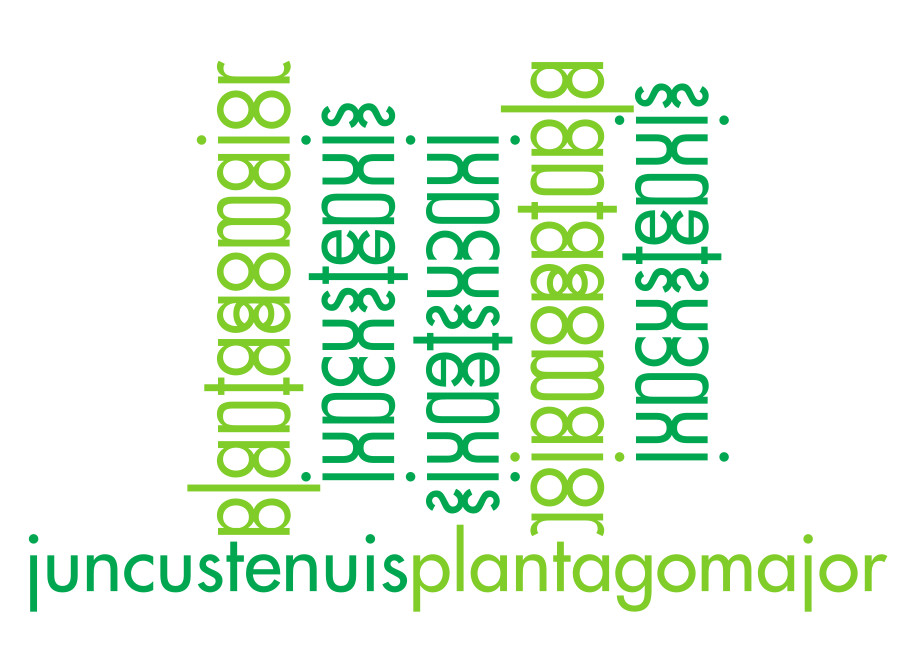Juncus tenuis (slender rush)
Juncaceae (rush family)
Perennial small clump-forming plant, 15–40 cm in height, with grass-like leaves, inflorescences in panicles with long hypsophylls. Flowers inconspicuous, yellow-green; seeds in small egg-shaped capsules. Dispersal by wind, water, animals and with soil that sticks to shoes and tires.
Tread-resistant type, grows mainly on compacted soil, for example on forest roads and in paving joints. Together with native tread-resistant plants such as broadleaf plantain (Plantago major) and knotweed (Polygonum arenastrum) forms a characteristic tread-resistant plant colony.
Neophyte originating from North America, which was first discovered in Europe (Belgium) in 1824. Spread rapidly, found only a few years later in southern Germany. Today cosmopolitan with occurrences among others in Japan, South and Central America.
Plantago major (broadleaf plantain)
Plantaginaceae (plantain family)
Perennial rosette plant, 5–25 cm in height, short-stemmed leaves, broadly ovate; flowers inconspicuous in dense ears. Spread by adhering seeds on soil, for example on animals, shoes and car tires.
Tread-resistant plant, often on field and forest paths, in pavement joints, on cattle pastures, also on riverbanks. Follow man wherever he treads on the earth: referred to by Native Americans as the »white man’s footprint«.
Indigenous to Germany, natural area covers all of Europe as well as large areas of North and Central Asia. Displaced globally, occurring today in almost all regions inhabited by humans, cosmopolitan.
